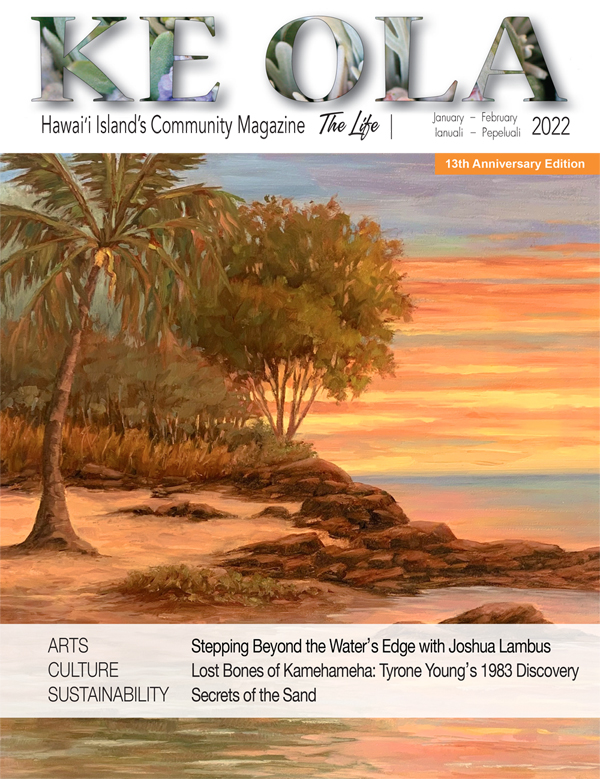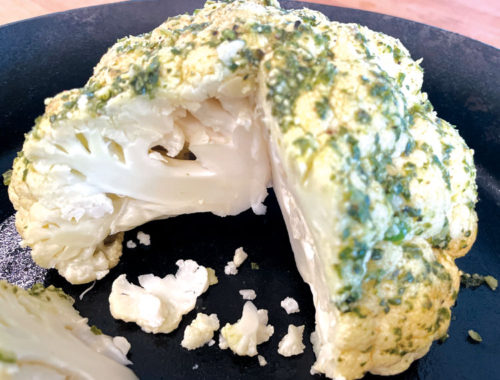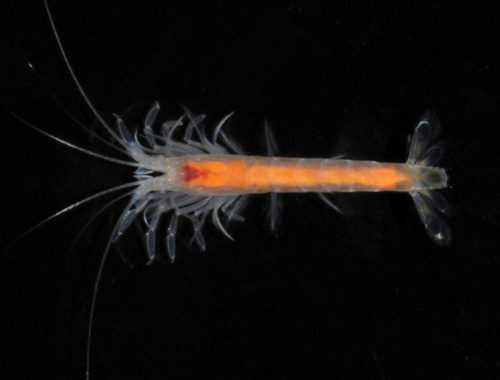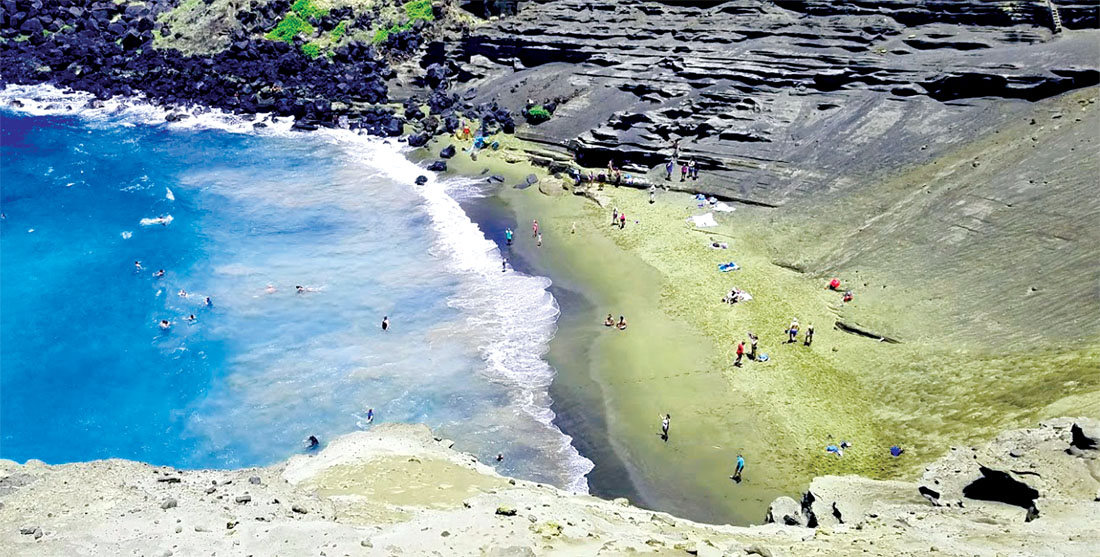
Secrets of the Sand

By Walter Dudley
A beach is a magical place for most of us, whether to swim, surf, snorkel, sip a Mai Tai, or simply watch the sunset. When people dream about going to the beach, they envision soft, warm, golden sand. But did you ever pick up a handful of that sand and begin to look at the individual grains, begin to wonder what they really are and where they came from?
As a child growing up along the beaches of the US east coast, I was accustomed to yellow or white sand and was quite intrigued when I first came to Hawai‘i, to see not only lovely, golden sand beaches, but also black and green sand beaches. Curiosity got the better of me and I began to examine the tiny particles. I had access to a good microscope and eventually even began studying and photographing sand grains with a scanning electron microscope, which could magnify the individual grains thousands of times. It was only then that the real secrets of Hawai‘i’s remarkable beach sands began to reveal themselves.
Most people assume that sand is—just sand. Many mainland beaches are made up of fragments of eroded rocks, often the main minerals found in nearby rocks such as granite. In Hawai‘i we have no granite, but we still have golden sand beaches. Where does this sand come from?
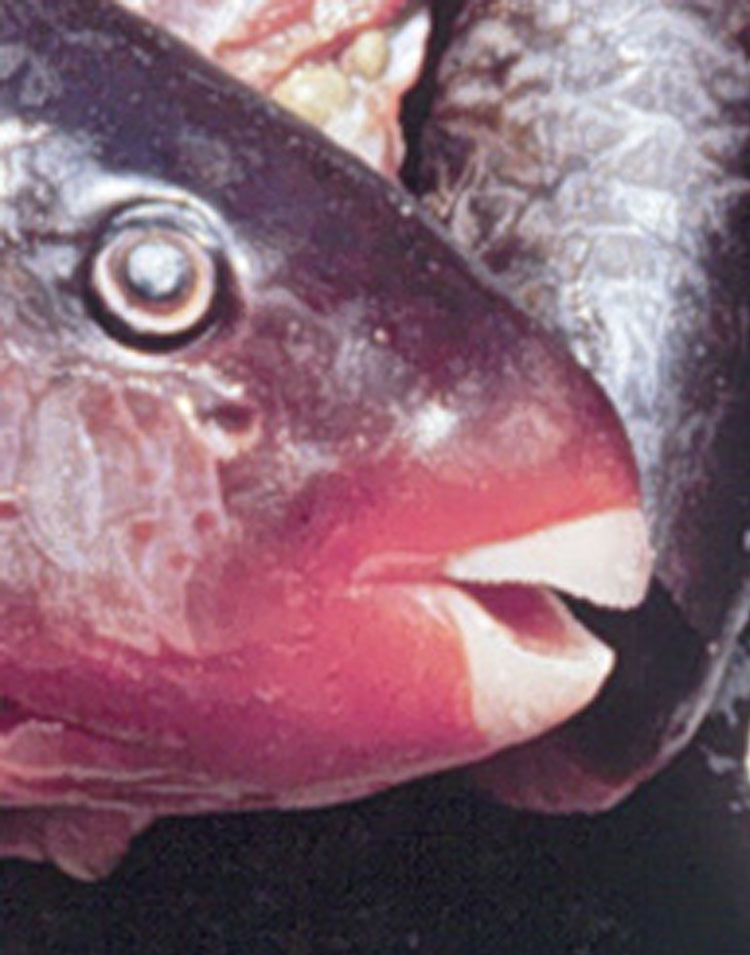
If you’ve ever been snorkeling or scuba diving in Hawai‘i, you’ve been swimming over some of the beautiful coral reefs that fringe many of our island shores. These reefs are made of corals, coralline algae, and a host of other organisms ranging from large fish to small marine snails, and even tiny amoeba-like animals called foraminifers (forams for short). If you guessed that most of our golden sand comes from these reefs, you’d be correct. Some sand is produced as the reefs are eroded by waves; however, much of the sand is created by the many fish that nibble at corals and coralline algae, and by sea urchins that scrape away at the reefs. The tiny fragments eroded by waves and bitten or scraped off by sea life are then carried by waves and currents to accumulate along the shore and create our golden sand beaches.
The details of this process can be rather surprising. For example, if you swim up behind a parrotfish, you may see the fish quickly swim away leaving a cloudy white trail in its wake. This is the parrotfish excreting sand. Yes, some of that lovely golden sand you’ve been lying on at the beach came out the back end of a parrotfish. Not to worry, though, by the time it gets to the beach, it is very sanitary sand. You see, parrotfish make much of their living by scraping coral and coralline algae off the reef.
But wait, there’s more: some of the sand grains are the entire shells of very tiny marine organisms, full grown. Among the sand grains you might also recognize some rather large, flat grains. These have been called paper shells and can be strung together, with lots of time and patience, to make very nice necklaces. These are actually forams mentioned earlier, ones that live on the bottom, more accurately called benthic forams. One species alone is thought to add as much as a pound of sand per square yard to O‘ahu’s beaches every year. They also add to science. Thanks to deep water species of these tiny animals, and their planktonic cousins that live near the ocean surface, we now know the actual temperature of the oceans during the ice ages, but that’s another story with a lot of math and chemistry involved.

Showing Their True Colors
Papakōlea, popularly known as Green Sand Beach, near South Point, is one of the wonders of the Hawaiian Islands. Lying in the shelter of a small volcanic cone named Pu‘u Mahana, this beach obviously gets its name from the color of the sand, composed partly of the olive green mineral appropriately named olivine.
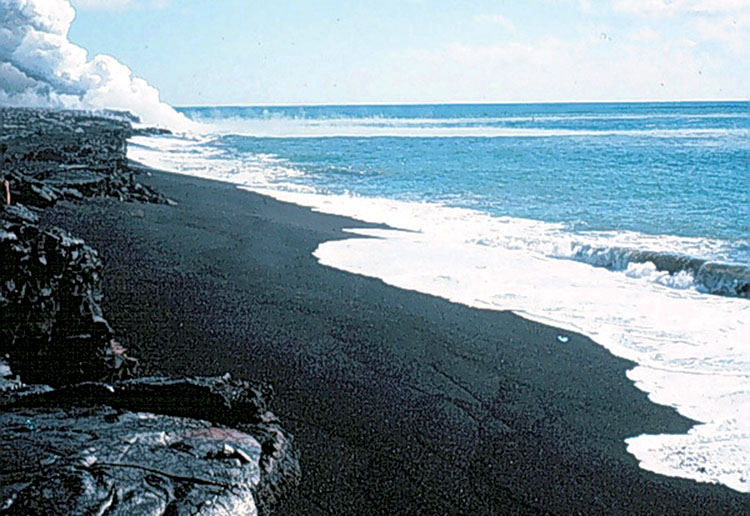
It was once thought that the beach formed as a surface lava flow entered the sea. But Pu‘u Mahana wasn’t always where it is today; both the sea and the site were at different elevations in the past. Thanks to radiocarbon dating of plants that the lava flows burned into charcoal, Pu‘u Mahana has been shown to be some 49,000 years old. In the past, most of Hawai‘i Island was higher than today because the weight of those huge mountains of lava which make up the island have caused the island to sink. Fortunately, it is sinking slowly, at least on a human time scale. It subsides only about 1/10th of an inch per year—multiplied by 49,000 years, that would put the little volcanic cone nearly 400 feet higher back when it was active. On top of that, 49,000 years ago, we were in an ice age and sea level was some 230 feet lower than it is today, hence Pu‘u Mahana would have been well over 600 feet above sea level when it erupted and definitely not pouring lava directly into the sea to form the beach. The best evidence indicates that the pu‘u (cindercone) was formed from olivine-rich magma that cooled, hardened into basalt rock and then eroded with time. Olivine is heavier than many of the other minerals in basalt and so it accumulated at the base of Pu‘u Mahana. When the ocean finally arrived, it became the famous green sand beach.
Black sand has a simpler explanation, or maybe not. Many of the black sand beaches in Hawai‘i are composed mainly of fragments of eroded basalt rock. The enchanting beach at the mouth of Wai‘pio Valley, as seen from the overlook, is just one of many examples. With a four-wheel drive vehicle, you can venture down the steep, windy road into the valley to the edge of this beach. From the beach itself, you can gaze back toward the scary road you just came down and to the left you see a beautiful little waterfall.
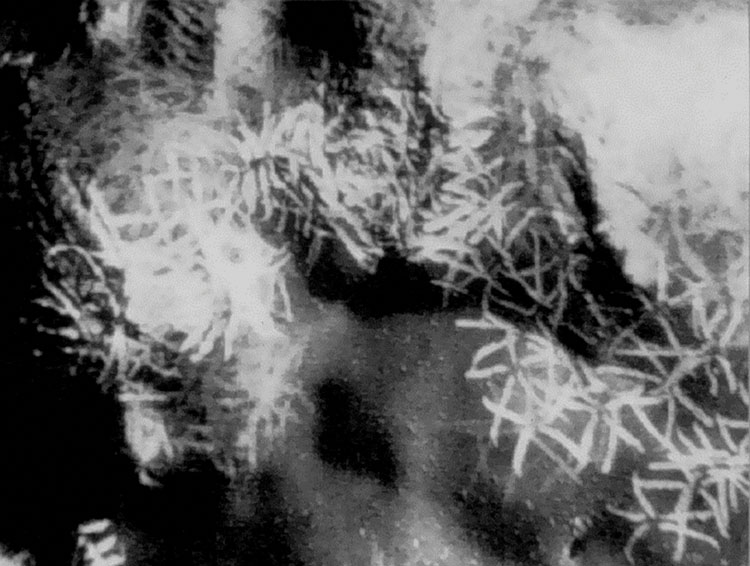
It was this very waterfall which served as the setting in the final scenes of the film Waterworld. That spot with the waterfall is the paradise of land discovered by the intrepid survivors of Waterworld. I can’t resist telling visiting friends that the waterfall lies almost directly beneath the restrooms at the lookout and that I personally wouldn’t swim there, though Kevin Costner did and survived.
There is another kind of black sand beach, which is very special, where the sand is formed as an active lava flow enters the sea. The hot molten magma meets the much cooler sea water that explosively cools the liquid magma into tiny shards of volcanic glass. These very sharp pieces of sand are definitely not the kind of grains you’d want to walk on or crawl through if you were a tiny sea creature. Fortunately, within days of their formation these grains are rounded and smoothed by being rubbed together in the breaking surf on these newly formed beaches. Examples of those are the new beaches created from the Lower Puna lava flow in 2018, at Pohoiki and Kumukahi, and also the famous beach at Punalu‘u.
One final note about these amazing grains of sand: studying them can be very interesting if you’re really into really tiny stuff, but scientific knowledge about them may actually save your life. As it turns out, the periodic, catastrophic waves called tsunamis, which can inundate any coast in the world including those in Hawai‘i, are waves that reach so deep in the ocean that they stir up very deep sand grains. These grains contain particles that are distinctly different from those which normally accumulate on a beach. By studying ancient deposits of sand grains, scientists can date very old and even ancient tsunami events and better determine the risk to modern day coastal areas. Thanks to these secrets in the sand, scientists can better evaluate tsunami hazard risks and better care for our safety. Next time you lie on that sandy beach, don’t think about the parrotfish poop cloud, but instead say, “Thank you, sand.” ❖
For more information: dudley@hawaii.edu
